The U.S. Navy is now officially looking into what it would take to arm its Zumwalt class stealth destroyers, also referred to as DDG-1000s, with hypersonic missiles. The service has also now disclosed that it is looking to field these missiles loaded into an Advanced Payload Module, or APM, that has “a three-pack configuration.”
The Navy’s Strategic Systems Program (SSP) office issued the so-called “sources sought notice” on March 18, 2021. This kind of announcement is intended to get companies to submit proposals in order to see what kind of options might be available to meet certain requirements, but is not automatically a prelude to a formal contract. SSP is better known as being responsible for managing the development, acquisition, and sustainment of the Trident D5 submarine-launched ballistic missile and the service’s Ohio class ballistic missiles submarines, or SSBNs, as well as work on the forthcoming Columbia class SSBNs.
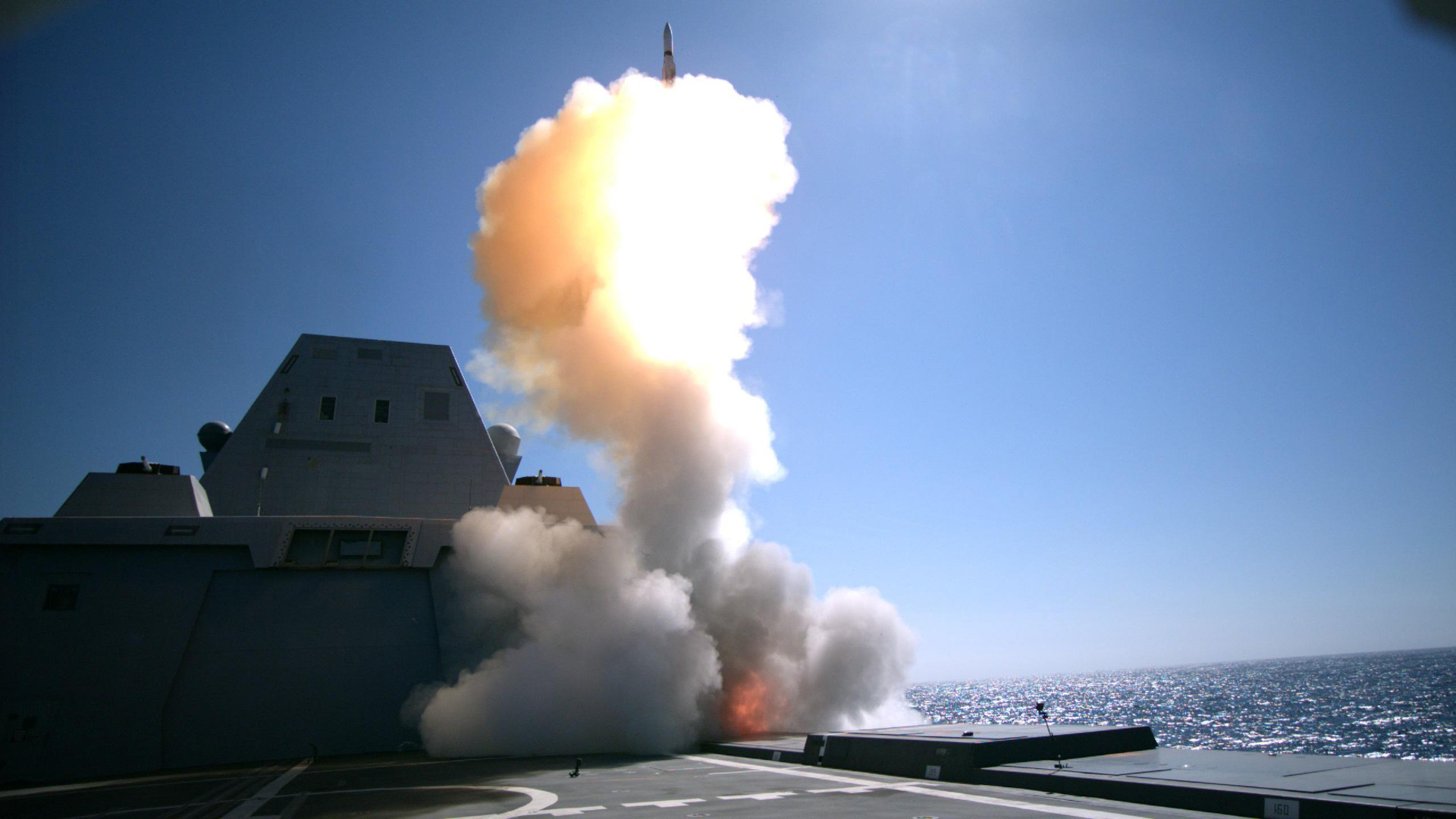
“SSP is currently assessing the means to implement the goals set in the FY21 National Defense Authorization Act (NDAA) to integrate hypersonic technologies with the Zumwalt class destroyers,” the Navy’s contracting notice says. “SSP is seeking input from industry to determine if there are sources with the facilities and proficiency required for executing the following capabilities.”
The requirements include integrating the various components of the Navy’s Intermediate-Range Conventional Prompt Strike (IRCPS) weapon, including the triple-packed APM and the necessary fire control systems, onto the service’s DDG-1000s. Contractors also need to submit proposals for how they would support expanding production of IRCPS components, as well as related items that are common between those weapons and the U.S. Army’s Long-Range Hypersonic Weapon (LRHW).
The Army and the Navy have been working on IRCPS and LRHW together as a joint-service effort and the missiles that both systems will fire are effectively identical. It’s not clear how long the weapons are, but the missile bodies are reportedly 34 and a half inches in diameter. Each one carries a single unpowered hypersonic boost-glide vehicle, also known as the Common Hypersonic Glide Body (C-HGB), in its nose.
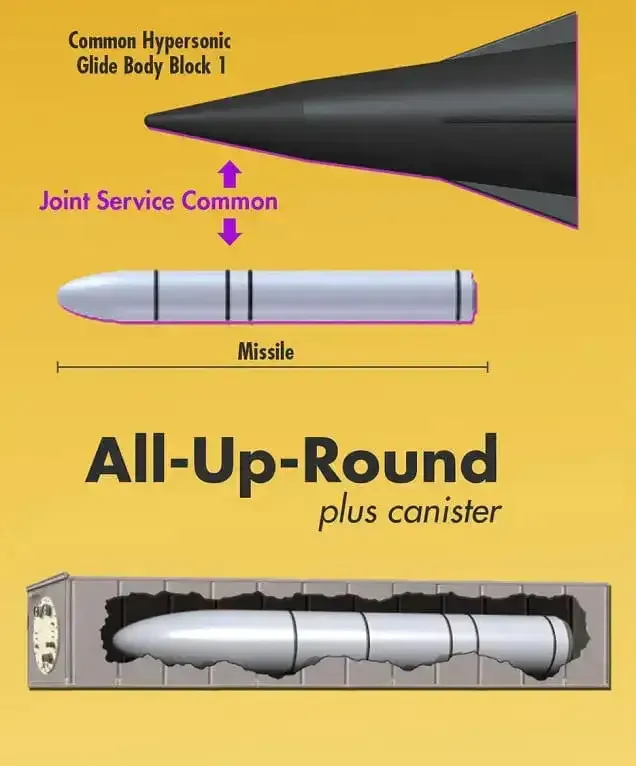
Unpowered hypersonic boost-glide weapons use large rocket boosters to get the vehicle to the desired speed and altitude, after which the booster falls away and the glide vehicle flies back down toward its target along a relatively unpredictable trajectory, which differs significantly from that of traditional ballistic missiles during their flight. This capability, combined with hypersonic speed, defined as anything above Mach 5, makes these kinds of weapons ideal for penetrating through dense air and missile defense and presents significant challenges for opponents to respond effectively or even try to run and hide.
The Navy’s present plan is to field IRCPS first on its future Block V Virginia class submarines, each of which will have four large-diameter multi-purpose vertical launch tubes, very similar to those on Ohio class boats, in an additional hull section known as the Virginia Payload Module (VPM). The service has also already conducted at least one test involving the firing of a missile carrying a prototype C-HGB from one of its Ohio class boats. There has been at least one ground-based test of the boost-glide vehicle, as well, but testing of full prototype IRCPS/LRHW missiles is not set to begin until later this year.
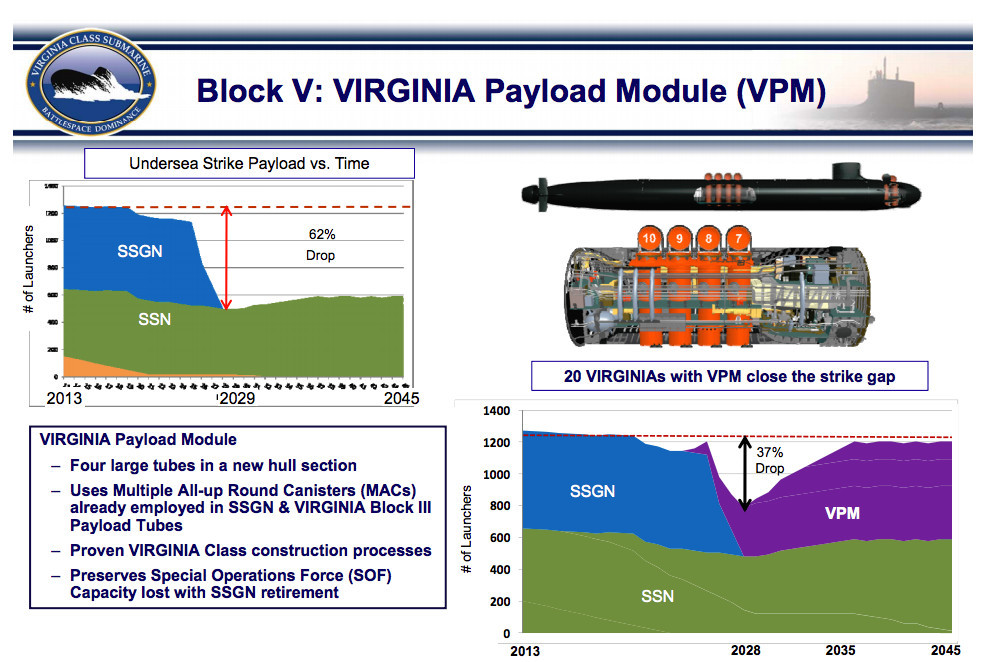
It’s not entirely clear from the contracting notice whether the APMs are specifically related to discussions about integrating IRCPS to the DDG-1000s or have already been in development for use in launching those weapons from submarines, but there strong indications that point to the latter. Based on the basic description of the APM, it would seem to be related to, if it is not a direct outgrowth of work on what was known as the Flexible Payload Module (FPM), which was designed to fit inside an Ohio class launch tube.
The FPM was developed around the same time that the Navy began the process of converting four Ohio class submarines into what were subsequently categorized as guided-missile submarines, or SSGNs. In actuality, these boats are highly-specialized multi-purpose platforms that launch cruise missile attacks, carry special operations forces, and act as underwater command and control and intelligence fusion centers, all of which you can read more about in detail in this past War Zone feature.
At least two versions of the FPM were developed and tested, the first of which had two 20-inch diameter launch tubes, as well as 10 smaller 14-inch ones. The second iteration had three larger diameter tubes, a configuration that sounds similar, if not identical to the new APM for use with the IRCPS hypersonic weapon.
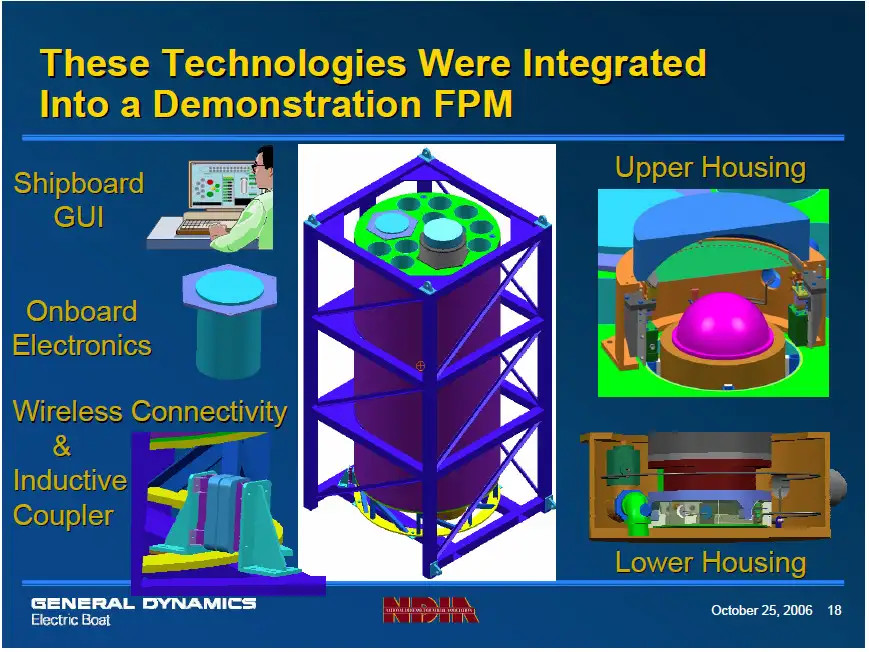
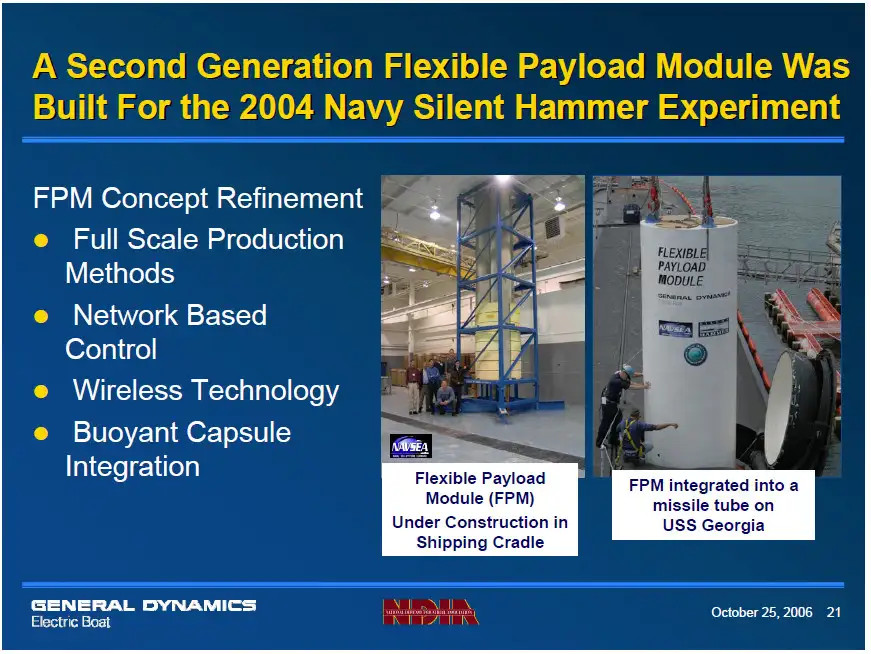
If the FPM and APM are indeed related, it would also strongly suggest that it would only take limited effort to integrate IRCPS onto Ohio class boats, either SSBNs or SSGNs, as well as the Columbia class submarines and possible future Large Payload Submarines. The Large Payload Submarine is an SSGN-like design concept the Navy has been exploring in recent years. If nothing else, the APMs would allow each Block V Virginia to carry up 12 IRCPS missiles at a time.
There has been discussion since at least last year about integrating the IRCPS onto the Zumwalt class destroyers, but it has been unclear how this might work given that these weapons are substantially larger than the dimensions of the existing Mk 57 Vertical Launch System (VLS) cells on these ships.
The disclosure in the contracting notice that the planned installation would be expected to use the APMs would indicate that the general idea, at least right now, is to try to find space on those destroyers for at least one launch tube of a similar size to the ones found on the Ohios, as well as those planned for the VPM on the Block V Virginias.
With that in mind, a logical course of action could be to install tubes in the space presently occupied by one or both of the two 155mm Advanced Gun Systems (AGS) on each DDG-1000s. The AGSs are autoloading and linked to large magazines that extend well below the deck line, all of which would no longer be necessary if these weapons were removed.
In 2016, the Navy notably decided not to buy any ammunition for these weapons, rendering them effectively dead weight and prompting discussions, including here at The War Zone, about possible replacement options. IRCPS could certainly be one alternative, though there has also been work on the development of hyper-velocity projectiles that would work with the AGSs.

Of course, the debate about the future armament of the DDG-1000s is just one part of the saga of those three ships, one of which, the USS Zumwalt, is technically in service now, with the other two, the USS Michael Monsoor and future USS Lyndon B. Johnson, are in various phases of their final fitting-out. The Navy originally expected to buy 32 of these ships, but those plans were significantly scaled back in the face of cost growth and delays due to various factors, including the complexity of the basic hullform, as well as other advanced technologies, including a unique combat management system and associated radars, developed to go into it.
There have been continued debates over the years about what the expected roles and missions of the Zumwalt class destroyers should be in the end. At present, the plan is to assign all three to a development unit that will be primarily focused on exploring new tactics, techniques, and procedures related to naval surface warfare. They are expected to deploy operationally and the Navy insists that they will be important frontline combat assets.
It’s also worth noting that there has been talk about possibly adding IRCPS, or some other future hypersonic weapon, to the arsenal of the Navy’s Arleigh Burke class destroyers, as well. “This capability will be deployed first on our newer Virginia class submarines and the Zumwalt class destroyers. Eventually, all three flights of the Arleigh Burke class destroyers will field this capability,” then-Trump administration National Security Advisor Robert O’Brien had said in a speech in October 2020.
If these ships, as well as the Zumwalts, do not ultimately end up armed with IRCPS, they could still eventually be able to fire other future hypersonic weapons, including air-breathing cruise missile designs and other types. The future SM-6 Block IB missile is expected to reach hypersonic speeds. Many of those weapons would likely fit into existing VLS cells, which would make their integration much easier.
The Navy’s contracting notice does not say when it might make a decision about whether or not to proceed with plans to arm the DDG-1000s with hypersonic weapons. However, it does say that any proposals need to be submitted very soon, no later than April 2.
Whatever ships and submarines ultimately end up being armed with IRCPS, it is now clear that the Navy plans to pack them into launch tubes three at a time.
Contact the author: joe@thedrive.com
